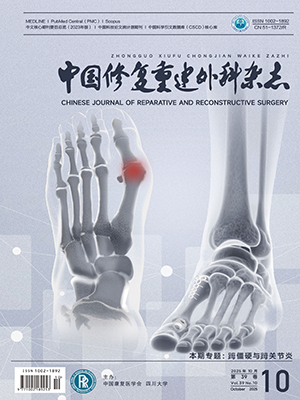| 1. |
Mukherjee PK, Mohamed S, Chandra J, et al. Alcohol dehydrogenase restricts the ability of the pathogen Candida albicans to form a biofilm on catheter surfaces through an ethanol-based mechanism. Infect Immun, 2006, 74(7): 3804-3816.
|
| 2. |
Romero R, Schaudinn C, Kusanovic JP, et al. Detection of a microbial biofilm in intraamniotic infection. Am J Obstet Gynecol. 2008, 198(1): 131.e1-135.e5.
|
| 3. |
Lauderdale KJ, Malone CL, Boles BR, et al. Biofilm dispersal of community-associated methicillin-resistant Staphylococcus aureus on orthopedic implant material. J Orthop Res, 2010, 28(1): 55-61.
|
| 4. |
Mah TF, Pitts B, Pellock B, et al. A genetic basis for Pseudomonas aeruginosa biofilm antibiotic resistance. Nature, 2003, 426(6964): 306-310.
|
| 5. |
Wolcott RD, Cox S. More effective cell-based therapy through biofilm suppression. J Wound Care. 2013, 22(1): 26-31.
|
| 6. |
Percival SL, Hill KE, Williams DW, et al. A review of the scientific evidence for biofilms in wounds. Wound Repair Regen, 2012, 20(5): 647-657.
|
| 7. |
O’Brien M. Exploring methods of wound debridement. Br J Community Nurs, 2002, 7(Sup 3): 10-18.
|
| 8. |
Falanga V. Classifications for wound bed preparation and stimulation of chronic wounds. Wound Repair Regen, 2000, 8(5): 347-352.
|
| 9. |
Schultz GS, Sibbald RG, Falanga V, et al. Wound bed preparation: a systematic approach to wound management. Wound Repair Regen, 2003, 11 Suppl 1: S1-S28.
|
| 10. |
Granick M, Boykin J, Gamelli R, et al. Toward a common language: surgical wound bed preparation and debridement. Wound Repair Regen, 2006, 14 Suppl 1: S1-S10.
|
| 11. |
Falanga V, Brem H, Ennis WJ, et al. Maintenance debridement in the treatment of difficult-to-heal chronic wounds. Recommendations of an expert panel. Ostomy Wound Manage, 2008, Suppl: 2-15.
|
| 12. |
Vowden KR, Vowden P. Wound debridement. Part 1: Non-sharp techniques. J Wound Care, 1999, 8(5): 237-240.
|
| 13. |
Vowden KR, Vowden P. Wound debridement. Part 2: Sharp techniques. J Wound Care, 1999, 8(6): 291-294.
|
| 14. |
Anderson I. Debridement methods in wound care. Nurs Stand, 2006, 20(24): 65-66, 68, 70.
|
| 15. |
Halim AS, Khoo TL, Saad AZ. Wound bed preparation from a clinical perspective. Indian J Plast Surg, 2012, 45(2): 193-202.
|
| 16. |
Eaglstein WH. Moist wound healing with occlusive dressings: a clinical focus. Dermatol Surg, 2001, 27(2): 175-181.
|
| 17. |
Eming S, Smola H, Hartmann B, et al. The inhibition of matrix metalloproteinase activity in chronic wounds by a polyacrylate superabsorber. Biomaterials, 2008, 29(19): 2932-2940.
|
| 18. |
Ramundo J, Gray M. Enzymatic wound debridement. J Wound Ostomy Continence Nurs, 2008, 35(3): 273-280.
|
| 19. |
Ozcan C, Ergün O, Celik A, et al. Enzymatic debridement of burn wound with collagenase in children with partial-thickness burns. Burns, 2002, 28(8): 791-794.
|
| 20. |
Rosenberg L, Lapid O, Bogdanov-Berezovsky A, et al. Safety and efficacy of a proteolytic enzyme for enzymatic burn debridement: a preliminary report. Burns, 2004, 30(8): 843-850.
|
| 21. |
Murthy MB, Murthy BK, Bhave S. Comparison of safety and efficacy of papaya dressing with hydrogen peroxide solution on wound bed preparation in patients with wound gape. Indian J Pharmacol, 2012, 44(6): 784-787.
|
| 22. |
Sherman RA. Maggot versus conservative debridement therapy for the treatment of pressure ulcers. Wound Repair Regen, 2002, 10(4): 208-214.
|
| 23. |
Sherman RA. Maggot therapy for foot and leg wounds. Int J Low Extrem Wounds, 2002, 1(2): 135-142.
|
| 24. |
Chan DC, Fong DH, Leung JY, et al. Maggot debridement therapy in chronic wound care. Hong Kong Med J, 2007, 13(5): 382-386.
|
| 25. |
Chambers L, Woodrow S, Brown AP, et al. Degradation of extracellular matrix components by defined proteinases from the greenbottle larva Lucilia sericata used for the clinical debridement of non-healing wounds. Br J Dermatol, 2003, 148(1): 14-23.
|
| 26. |
Turkmen A, Graham K, McGrouther DA. Therapeutic applications of the larvae for wound debridement. J Plast Reconstr Aesthet Surg, 2010, 63(1): 184-188.
|
| 27. |
Cazander G, van de Veerdonk MC, Vandenbroucke-Grauls CM, et al. Maggot excretions inhibit biofilm formation on biomaterials. Clin Orthop Relat Res, 2010, 468(10): 2789-2796.
|
| 28. |
Klaus K, Steinwedel C. Maggot debridement therapy: advancing to the past in wound care. Medsurg Nurs, 2015, 24(6): 407-411.
|
| 29. |
Eneroth M, van Houtum WH. The value of debridement and Vacuum-Assisted Closure (V.A.C.) Therapy in diabetic foot ulcers. Diabetes Metab Res Rev, 2008, 24 Suppl 1: S76-S80.
|
| 30. |
Anghel EL, DeFazio MV, Barker JC, et al. Current concepts in debridement: science and strategies. Plast Reconstr Surg, 2016, 138(3 Suppl): 82S-93S.
|
| 31. |
Rodd-Nielsen E, Harris CL. Conservative sharp wound debridement: an overview of Canadian education, practice, risk, and policy. J Wound Ostomy Continence Nurs, 2013, 40(6): 594-601.
|
| 32. |
Bradley BH, Cunningham M. Biofilms in chronic wounds and the potential role of negative pressure wound therapy: an integrative review. J Wound Ostomy Continence Nurs, 2013, 40(2): 143-149.
|
| 33. |
Scali C, Kunimoto B. An update on chronic wounds and the role of biofilms. J Cutan Med Surg, 2013, 17(6): 371-376.
|
| 34. |
Roy S, Elgharably H, Sinha M, et al. Mixed-species biofilm compromises wound healing by disrupting epidermal barrier function. J Pathol, 2014, 233(4): 331-343.
|
| 35. |
Long DM. Harvey cushing at Johns Hopkins. Neurosurgery, 1999, 45(5): 983-989.
|
| 36. |
Baker KG, Robertson VJ, Duck FA. A review of therapeutic ultrasound: biophysical effects. Phys Ther, 2001, 81(7): 1351-1358.
|
| 37. |
Stanisic MM, Provo BJ, Larson DL, et al. Wound debridement with 25 kHz ultrasound. Adv Skin Wound Care, 2005, 18(9): 484-490.
|
| 38. |
Scherba G, Weigel RM, O’Brien WJ. Quantitative assessment of the germicidal efficacy of ultrasonic energy. Appl Environ Microbiol, 1991, 57(7): 2079-2084.
|
| 39. |
Suchkova V, Carstensen EL, Francis CW. Ultrasound enhancement of fibrinolysis at frequencies of 27 to 100 kHz. Ultrasound Med Biol, 2002, 28(3): 377-382.
|
| 40. |
Peschen M, Weichenthal M, Sch?pf E, et al. Low-frequency ultrasound treatment of chronic venous leg ulcers in an outpatient therapy. Acta Derm Venereol, 1997, 77(4): 311-314.
|
| 41. |
Voigt J, Wendelken M, Driver V, et al. Low-frequency ultrasound (20-40 kHz) as an adjunctive therapy for chronic wound healing: a systematic review of the literature and meta-analysis of eight randomized controlled trials. Int J Low Extrem Wounds, 2011, 10(4): 190-199.
|
| 42. |
Ramundo J, Gray M. Is ultrasonic mist therapy effective for debriding chronic wounds? J Wound Ostomy Continence Nurs, 2008, 35(6): 579-583.
|
| 43. |
Granick M S, Posnett J, Jacoby M, et al. Efficacy and cost-effectiveness of a high-powered parallel waterjet for wound debridement[J]. Wound Repair Regen. 2006, 14(4): 394-397.
|
| 44. |
Mosti G, Iabichella ML, Picerni P, et al. The debridement of hard to heal leg ulcers by means of a new device based on Fluidjet technology. Int Wound J, 2005, 2(4): 307-314.
|
| 45. |
Caputo WJ, Beggs DJ, Defede JL, et al. A prospective randomised controlled clinical trial comparing hydrosurgery debridement with conventional surgical debridement in lower extremity ulcers. Int Wound J, 2008, 5(2): 288-294.
|
| 46. |
Vanwijck R, Kaba L, Boland S, et al. Immediate skin grafting of sub-acute and chronic wounds debrided by hydrosurgery. J Plast Reconstr Aesthet Surg, 2010, 63(3): 544-549.
|
| 47. |
Bowling FL, Stickings DS, Edwards-Jones V, et al. Hydrodebridement of wounds: effectiveness in reducing wound bacterial contamination and potential for air bacterial contamination. J Foot Ankle Res, 2009, 2: 13.
|
| 48. |
Maragakis LL, Cosgrove SE, Song X, et al. An outbreak of multidrug-resistant Acinetobacter baumannii associated with pulsatile lavage wound treatment. JAMA, 2004, 292(24): 3006-3011.
|
| 49. |
Daeschlein G, Lehnert W, Arnold A, et al. Hygienic safety of a new hydrodynamic wound debridement system. Dermatol Surg, 2010, 36(9): 1426-1438.
|
| 50. |
Angobaldo J, Marks M. Prevention of projectile and aerosol contamination during pulsatile lavage irrigation using a wound irrigation bag. Wounds, 2008, 20(6): 167-170.
|
| 51. |
Bortnick DP, Plastic Surgery Educational Foundation DATA Committee. Coblation: an emerging technology and new technique for soft-tissue surgery. Plast Reconstr Surg, 2001, 107(2): 614-615.
|
| 52. |
Chen MJ, Yang C, Zhang SY, et al. Use of coblation in arthroscopic surgery of the temporomandibular joint. J Oral Maxillofac Surg, 2010, 68(9): 2085-2091.
|
| 53. |
Paramasivan VK, Arumugam SV, Kameswaran M. Randomised comparative study of adenotonsillectomy by conventional and coblation method for children with obstructive sleep apnoea. Int J Pediatr Otorhinolaryngol, 2012, 76(6): 816-821.
|
| 54. |
Zhu H, Zhou XZ, Cheng MH, et al. The efficacy of coblation nucleoplasty for protrusion of lumbar intervertebral disc at a two-year follow-up. Int Orthop, 2011, 35(11): 1677-1682.
|
| 55. |
Kramer A, Hubner NO, Weltmann KD, et al. Polypragmasia in the therapy of infected wounds-conclusions drawn from the perspectives of low temperature plasma technology for plasma wound therapy. GMS Krankenhhyg Interdiszip, 2008, 3(1): 13.
|
| 56. |
S?nnergren HH, Str?mbeck L, Faergemann J. Antimicrobial effects of plasma-mediated bipolar radiofrequency ablation on bacteria and fungi relevant for wound infection. Acta Derm Venereol, 2012, 92(1): 29-33.
|
| 57. |
Nusbaum AG, Gil J, Rippy MK, et al. Effective method to remove wound bacteria: comparison of various debridement modalities in an in vivo porcine model. J Surg Res, 2012, 176(2): 701-707.
|
| 58. |
Yang R, Zuo T, Zhu J, et al. Effect of radiofrequency ablation on healing of infected full-thickness wounds in minipigs. Int J Low Extrem Wounds, 2013, 12(4): 265-270.
|
| 59. |
S?nnergren HH, Polesie S, Str?mbeck L, et al. Bacteria aerosol spread and wound bacteria reduction with different methods for wound debridement in an animal model. Acta Derm Venereol, 2015, 95(3): 272-277.
|
| 60. |
Bekara F, Chaput B, Téot L, et al. Coblation therapy in the management of chronic wounds. Plast Reconstr Surg, 2017, 139(4): 1026e-1028e.
|




